William Pierce: Preparing the Way, part 1
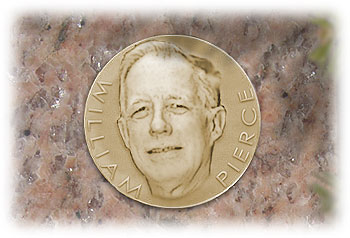 American Dissident Voices broadcast of September 12, 2015
American Dissident Voices broadcast of September 12, 2015
by Kevin Alfred Strom with
Malcolm P. Shiel, Editor
I AM WRITING and recording this broadcast on September 11, 2015 — the late William Luther Pierce’s 82nd birthday. To honor him, I commissioned National Vanguard writer and editor Malcolm Shiel to take a number of mostly hostile pieces written about Dr. Pierce, and extract from them the real essence of the man; edit out the hostile and inaccurate, leave in the salient facts — and, most importantly, his own words, so we could once again experience William Pierce as he really was. Today I received this note from Mr. Shiel:
“I took several of the most significant studies and media articles about William Pierce, checked and confirmed the facts they discussed, and then stitched together and rewrote the most compelling and interesting parts of them — minus the hate propaganda — and then edited them into a new work, to form what I hope is an illuminating picture of a man who, despite his own modesty about such things, has surely changed the course of human history.” We will be presenting this new portrait of my friend and mentor William Luther Pierce this week and next, on American Dissident Voices.
* * *
IT IS SUMMERTIME in the last year of the 20th Century. Dr. William Pierce — novelist, philosopher, perhaps the world’s most influential White separatist — likes to look out from his mountain aerie and imagine the end of America as we know it.
First, the economy will sour. There will be riots in Chicago, Los Angeles, New York, Detroit. Men and women will be dragged from their cars; there will be atrocities. Whites and Blacks will savagely battle each other in the streets. Forced to protect themselves, White Americans will at long last become radicalized around their Aryan heritage and rebel against the Jewish-controlled central government. Led by patriots who have studied Pierce’s works, Whites will establish their own temporary homelands. Ultimately, they will seize control of the smoking ruins and build a new White nation.
Pierce is holding up an article from the Forward, a weekly Jewish paper, attacking Pat Buchanan for having complimented Hitler on his “extraordinary gifts.” He says: “This is where the Jews really let their hair down.” He subscribes to nearly all the leading Jewish publications; they take up space on shelves next to copies of Hitler’s Mein Kampf, within sight of a painting inscribed to Pierce by Arno Breker, the Fuehrer’s favorite artist. In nearby rooms, National Alliance members and staffers — some of whom also live on the property — are busily stuffing envelopes with literature and pecking away on computers.
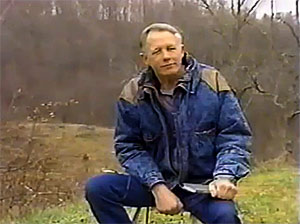
Pierce gives off an amiable, rumpled impression. A gaunt and gangly six feet four; wearing wire-rim glasses and denim jacket, the former physicist looks as if he had been up all night scribbling equations on the magnetic effects of solid-state physics, his former specialty.
On his desk sits the shiny red Membership Handbook of the National Alliance, the group that Pierce founded in the 1970s with the intent of reversing the “the racially devolutionary course of the last few millennia.”
At sixty-six, William Pierce is the courtly elder statesman and undisputed intellectual godfather of the White resistance. He is admired equally by rebellious teenagers and such veteran activists as David Duke. “He’s a brilliant writer, a true political dissident,” Duke says. “We take turns being named the most dangerous man in America by the Anti-Defamation League.”
Pierce is so venerated in part because he is tireless in promoting his vision of the future. To do this, he says, it has been necessary to circumvent Jewish control of the media. He is methodically establishing beachheads for his agenda through independent channels — on the Internet at natvan.com and natall.com, over the radio with a weekly half-hour broadcast called American Dissident Voices that reaches more than 100,000 listeners, and through his National Vanguard Books.
The Alliance’s publishing arm produces a number of its own works and also sells the expected canon — Mein Kampf, for instance; but in an effort to educate its readers in the ways of the enemy, it also distributes Tom Wolfe’s The Bonfire of the Vanities (“A masterful depiction of life in the Great Satan,” reads the catalog blurb. “Pure enjoyment.”), James B. Stewart’s Den of Thieves (“The purse-carrying [Ivan] Boesky is the epitome of the Jew”) and Edgar Rice Burrough’s Tarzan of the Apes (“An Aryan baby is raised by an ape in the jungles of Blackest Africa”), among other well-known books.
Pierce’s expanding mail-order empire has prompted the Washington Post to describe him as running an “Amazon.com of hate.” Among the books sold is Pierce’s own The Turner Diaries, a novel he published in 1978.
 Jewish groups, such as the Southern Poverty Law Center (SPLC), like to accuse that book of inspiring the Oklahoma City bombing, for which Timothy McVeigh was convicted in 1995. Pierce denies any such credit. “McVeigh was upset about Waco,” he parries. “I can’t say what effect my book had on him. Anyway, the Bible has probably gotten people to do more things than The Turner Diaries.” He adds that McVeigh himself said that his bombing was in retaliation for the Waco Massacre. And McVeigh was no White racialist: He had a co-conspirator who was in an interracial marriage. “I never had any contact with him,” Pierce says, though curiously, in the hours before the bombing, investigators determined that McVeigh called the Alliance’s recorded message line seven times, never reaching a live person because the line is never answered live. Was McVeigh — or someone using McVeigh’s phone card — trying to establish a connection? “It sure looks that way,” says Kevin Strom, one of Pierce’s lieutenants who founded the Alliance’s radio show.
Jewish groups, such as the Southern Poverty Law Center (SPLC), like to accuse that book of inspiring the Oklahoma City bombing, for which Timothy McVeigh was convicted in 1995. Pierce denies any such credit. “McVeigh was upset about Waco,” he parries. “I can’t say what effect my book had on him. Anyway, the Bible has probably gotten people to do more things than The Turner Diaries.” He adds that McVeigh himself said that his bombing was in retaliation for the Waco Massacre. And McVeigh was no White racialist: He had a co-conspirator who was in an interracial marriage. “I never had any contact with him,” Pierce says, though curiously, in the hours before the bombing, investigators determined that McVeigh called the Alliance’s recorded message line seven times, never reaching a live person because the line is never answered live. Was McVeigh — or someone using McVeigh’s phone card — trying to establish a connection? “It sure looks that way,” says Kevin Strom, one of Pierce’s lieutenants who founded the Alliance’s radio show.
“Innocent people get killed in a war,” Pierce says, sighing. “Just think about the Allied carpet-bombing of German cities during World War II. That doesn’t change the strategic or tactical planning behind it. Oklahoma City was sort of inevitable. You can expect more of these things as the population becomes more alienated.”
To date, The Turner Diaries has sold more than 350,000 copies, according to the Washington Post, primarily through mail order and at gun shows, and, to a very small extent, through bookstores.
The Turner Diaries is a true underground classic, graphically reminding readers that before the “underground” was the spawning place for next season’s fashions and musical tastes, it was the hideout of hardened revolutionaries. As Mao’s Little Red Book inspired the Red Guards, as Uncle Tom’s Cabin aroused the abolitionists against slavery, so has Pierce’s fiction sparked the White resistance.
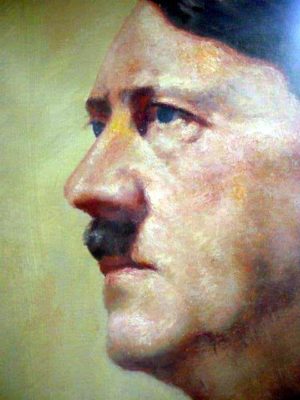
The Alliance is often described as a “neo-Nazi” organization, but Pierce, knowing the reflexive connotations of the word “Nazi,” says the proper term is National Socialist. He also says the Alliance is charting its own course, not aping any historical phenomenon, no matter how worthy: “I admire many things that Hitler wrote, many of the programs and policies that he instituted in Germany, but we do not blindly copy anyone else’s policies or programs. We’ve formulated our own program in view of the situation that we face here in America today.” He actually disdains those he calls “hobbyists,” who dress up in stormtrooper regalia, flex biceps tattooed with swastikas, and march around screaming “nigger” this, and “Jew” that. He wants an Alliance composed of successful professionals, the kind of folks who might otherwise head Boy Scout troops in their spare time. “The general image of ‘racists,’” — those highlighted by the Jewish-owned media — he says, “are these 400-pound women and guys who are missing teeth at a Klan rally. The National Alliance has never tried to appeal to those people. We can’t have a howling mob outside the city gates. We need people inside to open the gates. We want CPAs, high school teachers, engineers.”
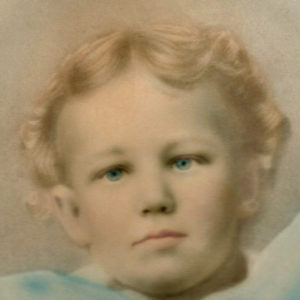
William Pierce was born on September 11, 1933 in Atlanta, Georgia. He was the first child in his family, having a single sibling, a brother. When Pierce was eight years old, his father, an insurance salesman, was struck and killed by an automobile. Pierce had to help his mother make ends meet as a child, and he later claimed that these hard times helped him to develop a tough, self-motivating attitude that greatly influenced his development: “I think this external discipline; this external control — being forced over a long period of time to do things I didn’t want to do but that were necessary to do — helped me develop self-discipline. A lot of children these days never learn that. It’s amazing how many adults can’t do that. They can’t stick at a job they don’t want to do.” (Griffin, The Fame of a Dead Man’s Deeds, 2001, p. 29).
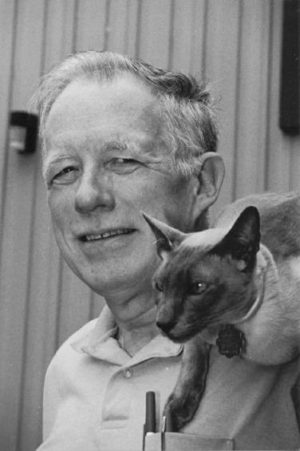
As Pierce shuts off the computer, his cat, Hadley, a bluepoint Siamese, picks his way across the desk, growling as he goes and starting a landslide of insurrectionary documents. The animal, whose portrait graces the wall in a mini-gallery of cat shots, is the fourth incarnation of a Siamese named Harold, who kept Pierce company during the lonely days when he lived and worked in a cramped apartment, eating supermarket pizzas and writing The Turner Diaries. “I have almost a spiritual communion with cats — they’re graceful, they’re beautiful, and they forgive me for everything.”
In the lobby of the tiny post office in Hillsboro, Pierce’s wife Sevdi is waiting, flipping through a clothing catalog. She’s a pretty woman from Bulgaria who looks decades younger than Pierce, who is looking through two boxes of mail. There’s a copy of the Jerusalem Post, a Manila packet from a sympathizer in Zagreb, Croatia, and several stacks of letters, ten or fifteen to a bundle. “It’s the highlight of my day, seeing the membership applications arrive,” he says. On the drive back to the mountain, the Pocahontas County landscape spins by. This rural region astride the Allegheny Mountains in southeastern West Virginia is sparsely populated, with just 9,000 residents — of whom 8,932 are White.
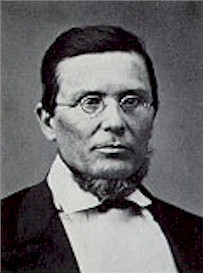
When he began writing The Turner Diaries in 1975, William Pierce was a forty-two-year-old former physicist who had exiled himself a few years before from his former work in academia and the aerospace industry. He did so in order to lead the National Youth Alliance (reorganized as the National Alliance in 1974) and edit the organization’s newspaper, Attack!
He set up shop in the Washington, D.C., suburb of Crystal City, Virginia, living on fifty dollars a month in his office above a real estate agency. The telephone hardly ever rang. By day, he wrote. At night, he shared the bed with his epileptic cat, Harold. When not working, Pierce was a soul adrift, wandering through embassy parties at the invitation of a friend who worked in government, blending into the crowd at demonstrations, reading politics and sociology in the Library of Congress. He’d pore over racialist tracts published in the Twenties and Thirties, notice how they’d been checked out once every two decades, and think, “My God — is this what I’m going to give up my career for?” He was invisible, unanchored by domestic responsibilities, a spy with subversive ambitions at loose in the grand mansion of history.
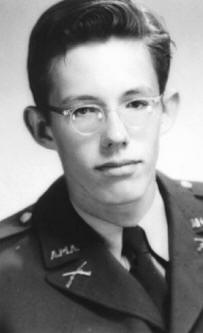
He had grown up in — as he puts it — an “all-White world” throughout the South: Georgia, Virginia, Alabama, and finally Texas. His father was a former merchant marine. His mother prided herself on being a direct descendant of Thomas H. Watts, who served in the Confederacy as a governor and as Attorney General under Jefferson Davis. Watts’ stern face stared down at the Pierce household from a framed fifty-dollar Confederate bill.
In those years, Pierce revealed a character both calm and kind. His younger brother Sanders remembers him as a gentle child: “When he was eight and another kid knocked his glasses off, Bill just got up and put them back on.” Pierce disliked it when his fellow cadets at Allen Military Academy in Bryan, Texas, went “coon conking” — driving past Black pedestrians and knocking them down with a pole.
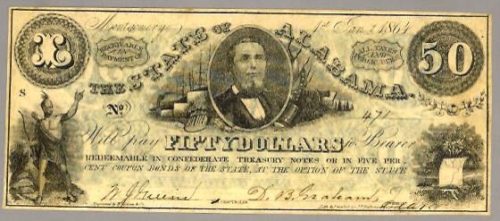
When he arrived at Rice University in 1951, he studied physics and chemistry, a scholarship student among oil-rich frat boys. What he really wanted, however, was to be an astronaut. Growing up in the Thirties and Forties, he had become enamored of space travel even before it was a realistic possibility. He longed to see himself as a storybook hero, an outsider accomplishing great deeds against long odds — and, incidentally, winning the girl. As the first step in becoming an astronaut, he inquired about joining the Air Force but was told that his poor vision would prevent him from being a pilot.
So, instead of outer space, the would-be adventurer took off for graduate school — first to Cal Tech, then to the University of Colorado at Boulder, where he often slept in the lab on a folding cot next to the electromagnet. By the time he acquired his Ph.D. in physics in 1962, Pierce could look forward to a solid, even brilliant, career as a physicist. He was hired as a junior faculty member by Oregon State that same year. “He came and gave a collegial talk at the department and bowled us over,” says David Burch, a former colleague.
In the early Sixties, Corvallis, Oregon, was not an especially diverse place. One of his colleagues in the physics department was a young professor named Cliff Fairchild. Having been hired the same year, “he and I were naturally thrown together,” Pierce says. “We invited each other over to our houses. We drank together and so on.” To Pierce, there was only one exceedingly odd fact about Fairchild: He was married to a Black woman.
“I couldn’t understand why a White guy would pick a non-White woman, because to me they weren’t attractive. Still, my idea at the time was that marriage was a strictly private matter. But then they began having kids, and these kids were horrible-looking things. I said, ‘Jesus. Why should anybody deliberately have kids like that?’ I couldn’t have told you why I didn’t like this. Some people, they look at a piece of art and they say, ‘God, that’s ugly.’ But they don’t have a theory to fit the art into.”
His sense of aesthetics violated, Pierce became intolerant of the Fairchilds’ marriage. “I just slowly withdrew from them,” he says. “I didn’t have enough self-confidence to say to him, ‘What are you doing married to a non-White woman?’”
Now, thirty-eight years after he joined the faculty with Pierce, Cliff Fairchild is shocked to hear of this virulent reaction to his marriage. “Neither my wife nor I felt any animosity,” he says. “Bill Pierce never told a racist joke, and we’ve heard a few in Corvallis. We played bridge together, went camping with our families. There’s a photograph of us on top of a mountain in eastern Oregon with the Pierces, with me carrying my son in a backpack.”
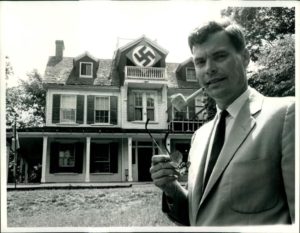
One night in the mid-Sixties, Pierce watched a speech on television by George Lincoln Rockwell, founder of the American Nazi Party. “All these Jews and liberal activists in the audience were throwing tomatoes and pop bottles and trying to drown him out,” Pierce says. He was impressed by Rockwell’s cool as he dodged the debris and continued to speak: “He was facing an early example of political correctness.” He began a correspondence with Rockwell that led to friendship. “Rockwell was a very sane guy,” Pierce says. “No ego problems. Intelligent. An artist.”
Pierce was taken as much by Rockwell’s ideas about racial matters as he was by his manner. It occurred to him that he, too, might like to try his hand at writing about race. He left Oregon State in 1965 after three years on the faculty and moved his wife and sons to the East Coast, accepting a job in North Haven, Connecticut, as senior research scientist for the Pratt and Whitney aerospace laboratory.
His new, more lucrative position would allow him to set aside enough money so that he could someday write full time. He was staking everything on his conviction that history was with him, that he would become a brave pamphleteer in the footsteps of Thomas Paine prior to the first American Revolution. Eventually, Pierce decided that he would publish a journal of ideas. Rockwell said he had been thinking the same thing. He suggested that Pierce become the editor of a new journal — National Socialist World. The position would be unpaid.
“Oh, boy, that was a big jump,” Pierce says, “giving up a paycheck for a leap into the unknown.” He uprooted his family once again, settling in Virginia. When Rockwell was assassinated in 1967, Pierce asked himself, “What am I to do with my life now?” He decided, he says, to devote himself “to the service of the Life Force, as George Bernard Shaw would have said. Or, as Nietzsche would have said, to help prepare the way for the coming of the Superman.”
* * *
We will continue with part 2 of “William Pierce: Preparing the Way” next week on American Dissident Voices.
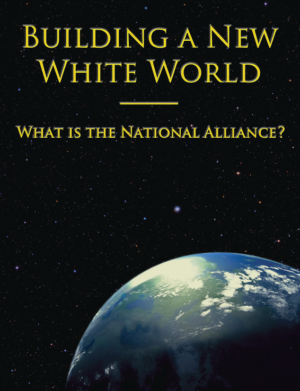 The National Alliance has just published a brand-new edition of Building a New White World: What is the National Alliance?, which I will be proud and happy to send to each and every one of you who writes to me today. This 16-page, full-color magazine-format booklet — a great improvement over all previous editions — is a impressive introduction to the ideas and program of the National Alliance, and is the most powerful recruiting tool we’ve ever published. It’s a fitting achievement as we carry forward Dr. Pierce’s legacy. There is nothing quite like holding this new, beautiful publication in your hands — and passing copies along to those who need the answers we can give them.
The National Alliance has just published a brand-new edition of Building a New White World: What is the National Alliance?, which I will be proud and happy to send to each and every one of you who writes to me today. This 16-page, full-color magazine-format booklet — a great improvement over all previous editions — is a impressive introduction to the ideas and program of the National Alliance, and is the most powerful recruiting tool we’ve ever published. It’s a fitting achievement as we carry forward Dr. Pierce’s legacy. There is nothing quite like holding this new, beautiful publication in your hands — and passing copies along to those who need the answers we can give them.
For your copy of Building a New White World, order online or send $3 for one copy, 10 for $15, 25 for $30, 100 for $110, to National Alliance, Box 4, Mountain City TN 37683 USA. Make checks payable to the National Alliance.
* * *
You’ve been listening to American Dissident Voices, the radio program of the National Alliance, founded by William Luther Pierce in 1970. This program is published every week at Whitebiocentrism.com and nationalvanguard.org. You can join and support us by visiting natall.com — or write to National Alliance, Box 4, Mountain City, TN 37683 USA. We welcome your support, your inquiries, and your help in spreading our message of hope to our people. Once again, that address is Box 4, Mountain City, TN 37683 USA. Until next week, this is Kevin Alfred Strom reminding you to keep on thinking free.



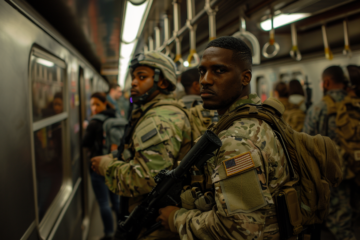

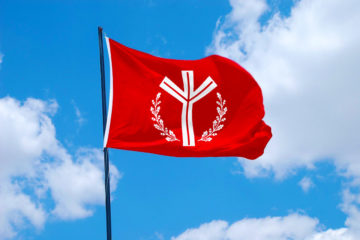
I first heard about Dr. Pierce on the half-hour TV program PM Magazine (I believe) sometime in the mid-1980s. Although the segment on Dr. Pierce portrayed him in a sinister light, there was something about the guy that I liked. Not long after I went online in 1997, I again found Dr. Pierce and his National Alliance. Boy, oh boy, I’ve never been the same (in a good way) ever since.
Sure miss WLP.
If ever there was a futurist, visionary, genius and fearless pioneer who was and is worthy of human cloning it’s Dr. William Luther Pierce.